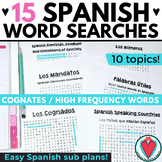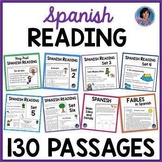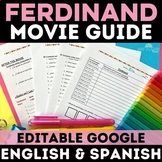2,876 results
Japanese pdfs
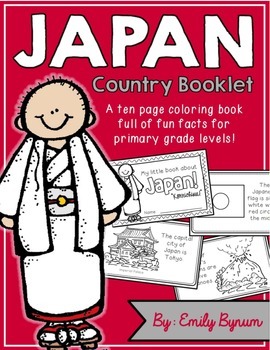
Japan Booklet (a country study!)
This "All About Japan" booklet can be used for a very basic country study in lower elementary grades! Each page contains a basic fact and related illustration. All graphics are in an outline format so that it's ready to be colored like a mini-coloring book.
This coloring booklet gives all the general/basic information about Japan, including:
-geography (islands in the Pacific Ocean)
-Japanese flag
-capital city of Tokyo
-popular Japanese foods
-traditional architecture
-volcanoes
-ancient war
Subjects:
Grades:
K - 3rd
Types:
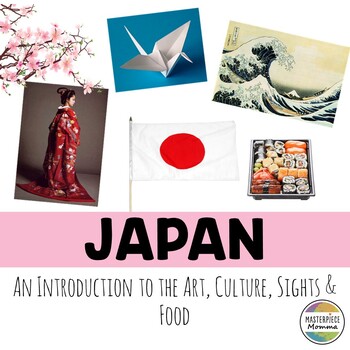
Japan: An Introduction to the Art, Culture, Sights, and Food
This slideshow helps elementary students quickly learn about famous landmarks, food, art, and the culture of Japan. You can use this slideshow at the beginning of a unit on Japan. You can also print it out and use it as a book for student research. This slideshow also has 4 questions at the end of the slideshow to review what students have learned. This download comes as a PDF file and is NOT editable as a PDF. However, you can open this slideshow in the TPT EASEL program and add or delete pages
Subjects:
Grades:
K - 6th
Also included in: Asia (Bundle): An Introduction to the Art, Culture, Sights, and Food
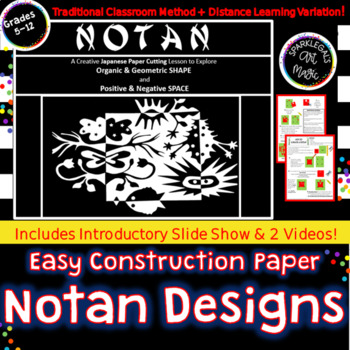
2-D Art: Cut Paper Notan Designs- Middle School Art - Elements/Design Principles
Notan Cut Paper Design Project! Introduce your art students to the Art of Japan! Middle School, or High School art students will love creating Notan Designs! ⭐Your students will learn about:The Art Elements: Space and Organic and Geometric Shapes. Design Principles: Contrast, Variety, and Symmetrical and Asymmetrical Balance!What is a Notan?A Notan is a Japanese design that uses positive and negative space and dark and light shapes to create balanced, high-contrast designs.►Materials needed for
Subjects:
Grades:
5th - 9th, Higher Education, Adult Education
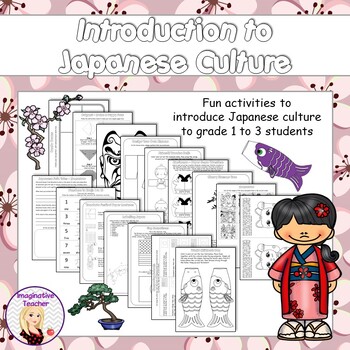
Introduction to Japanese Culture
This pack that includes 17 activities designed as an introduction to the Japanese culture, suitable for grade 1 to 3. While I myself am not Japanese, I spent a lot of time researching as I was required to teach about the culture (not the language) as a pre-requisite for junior students before they started their formal language lessons.The activities are based around a fun, hands on approach to give students ‘a taste’ of Japan. Included are each of the printable activities, teacher notes to expla
Subjects:
Grades:
1st - 3rd
Types:

Japanese: Hamburger Shop - HIRAGANA based version
This comprehensive resource aims to provide teachers with everything they will need to teach this unit of work.The unit goals are:By undertaking this unit of work, students willextend their ability to read and write hiragana and kanjilearn how to ask for items develop an understanding of Japanese Yen notes and coinslearn how to state and read numbers in the hundreds and thousandsdevelop an awareness of formulaic language used in transactionscreate and perform a shopping role-playI have included
Subjects:
Grades:
3rd - 7th
Types:
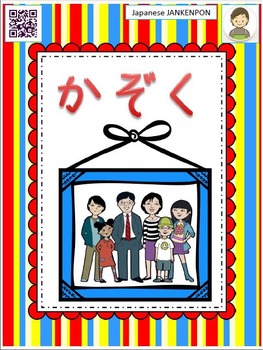
Japanese: FAMILY - a complete unit of work
This comprehensive resource enables teachers to concentrate on teaching, as the planning has been largely done for them! This resource consists of 117 pages. The language used in these materials is all in script - hiragana and limited kanji. No 'romaji' - romanisation of words is used.Students of Japanese will learn how to• Count people• Ask and answer questions about how many people are in their family• Make and read statements about family size• State the names of family members. ( Whilst it i
Subjects:
Grades:
4th - 8th
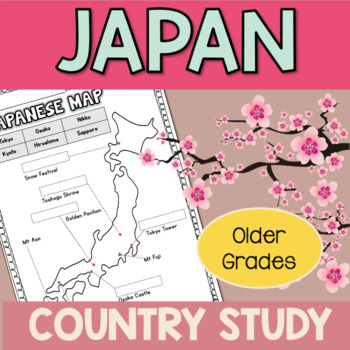
Japan Country Inquiry Unit ( Social Studies)
Description: As an Educator teaching in Japan for more than 10 years, here are some topics of Japan that I feel are engaging and interesting for young adults . Japan is a marvelous country with so many things to learn from- hopefully these resources can help your students learn about another country but most importantly grow into culturally intelligent human beings! Topics CoveredA) Geographic LocationJapanese FlagJapanese MapJapan ResearchJapanese MoneyInformation about Japanese Money
Grades:
3rd - 8th
Types:
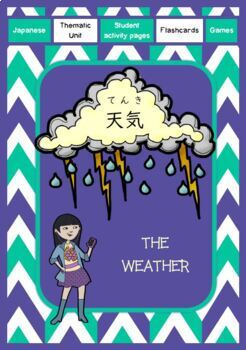
Japanese: Weather Report
The unit is designed for students of Japanese and includes a wide variety of materials and activity ideas to free up teacher time for teaching!!By undertaking this unit of work students will develop listening, speaking, reading and writing skills. ( Please note that ROMAJI is not used.)The aim is that students will be able to report on the weather in cities in Japan.This resource was originally created in 2015.In 2021 a suggested teaching sequence was added.The update in 2022 is a major one and
Subjects:
Grades:
4th - 8th
Types:
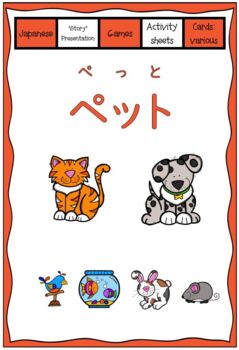
Japanese: PETS - a unit for young learners
PETS: a unit for young learnersThis comprehensive unit will enable students to introduce their pet or one they would like to own! Sentence patterns covered:わたしのペットです。ぼくのペットです。犬です。なまえは SPOTです。三才です。小さいです。はいいろ です。大好きです!The materials included in this unit comprise:A 'story' presentation which depicts various children introducing their pets - students will hear the sentence patterns and vocabulary many times and participate in choral 'reading'. ( Please note that romaji is NOT used.)A detailed teachi
Subjects:
Grades:
K - 4th
Types:

Koinobori 鯉のぼり - Japanese koi flags - craft
Koinobori (鯉のぼり) are Japanese carp streamers that are flown every year for Children's Day (子供の日). Families fly the streamers above their homes, with a koi flag for each member of the family. Your students can take part in this colorful tradition honoring children by creating their own koinobori. Appropriate for students of all ages and abilities, this activity allows each child to personalize a koinobori to be displayed proudly in their classroom or at home.
Subjects:
Grades:
Not Grade Specific
Also included in: Japanese Children's Day holiday (May 5) activity bundle

Hiragana Karate Belt System for your Japanese program
This is a guide to setting up a program, using the karate belt system, to help interest, motivate and challenge your students as they work towards mastering Hiragana. Included is;Teaching ideas and a possible teaching sequence Recording sheet for students Display posters outlining the beltsPrintable labels for containers Printable practice cardsCertificates for green and black belt
Subjects:
Grades:
4th - 7th
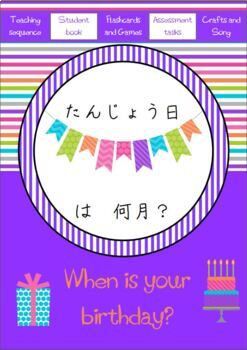
Japanese: When is your birthday?
This Teaching and Learning resource is designed for younger students of Japanese to learn to ask and answer the question たんじょうびは何月ですか。using the months of the year. 一月~十二月.No romaji is included.The unit does assume students have already learned how to count, at least to ten, in Japanese, and can recognise kanji number symbols. Some number revision pages are included, however, in the Student Book pages which can be included or omitted at the discretion of the teacher.THIS RESOURCE contains: · Aust
Subjects:
Grades:
K - 3rd
Types:
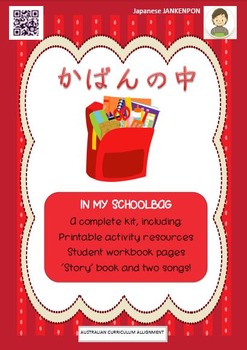
Japanese: In my schoolbag!
This is a complete teaching kit featuring
a 'story' book in picture and written formats
two original songs
new group game
hands on activities
flashcards, playing cards,
student workbook pages
teaching sequence suggestion
Australian curriculum alignment details
and more!
Vocabulary includes
のり
ノート
けしゴム
はさみ
ふでばこ
えんぴつ
ものさし
本
かばん
中
Grammar
Q/A だれのはさみですか。わたしのです。TOMくんのです。
Q/A なにが かばんの中にありますか。 のりがかばんのなかにあります。
えんぴつをください。どうぞ。ありがとう。
Subjects:
Grades:
Not Grade Specific
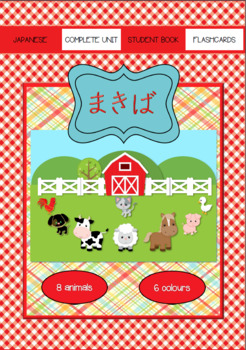
Japanese: MAKIBA: The Farm - a complete unit for young learners.
This engaging resource provides materials for a complete teaching unit.Learning Outcomes: Students will be able to name 8 farm animals and make sentences describing their colour.Students will be able to read and write animal names, read colour nouns and also read complete statements!This kit provides:- a variety of resources with which to create engaging lessons- teachers with a flexible approach, as sequencing and the inclusion/omission of activities is at the teacher’s discretionThis kit cont
Subjects:
Grades:
K - 3rd
Types:
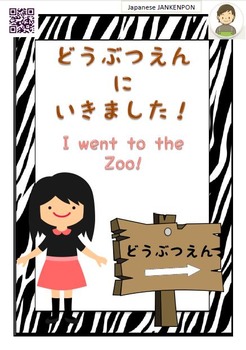
I went to the Zoo! どうぶつえんに行きました。
This unit of work aims to provide a scaffolded approach to teaching students how to sequence ideas and events, at a basic level.
The popular ‘Zoo’ theme is the basis for recount-style narratives.
To this end, students will FIRSTLY be introduced to the basic vocabulary—the names of 12 zoo creatures. ( I have said ‘creatures’ since penguins are birds not animals!)
THEN students will learn to answer the question ‘What did you see?’ with ‘I saw a penguin’ and ‘I
Subjects:
Grades:
3rd - 7th
Types:

Japanese: I LOVE VEHICLES! A unit for young learners of Japanese
のりものが大好き!
This comprehensive resource has been created to enable teachers to facilitate student learning, by providing the materials required to teach a complete unit of work!
The materials include
* links to the Australian Curriculum
* a detailed teaching sequence, explaining how to use the materials
* flashcards, playing cards, board games, 'paper interactives'
* song charts
* a bi-fold flap book to read with students
* 18 page student workbook
* assessment tasks and rubrics
By completing the
Subjects:
Grades:
2nd - 4th
Types:
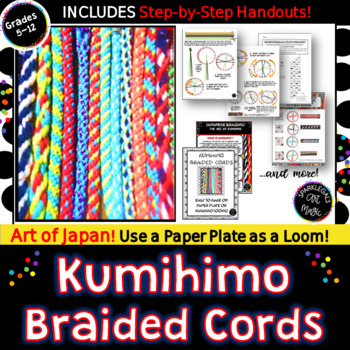
KUMIHIMO Braided Cords Paper Plate Loom! Art of Japan! Middle School Jewelry
Warning: These Braided Cords are Addictive! If you need a fun and easy jewelry or textile-related lesson, this is a FUN art activity that can be created using a paper plate! I used this lesson last Spring as students finished their Kente Cloth Cardboard Weaving lesson. These braids were a great "early-finisher" activity to keep students engaged while other students finished up their weavings. I used simple paper plates to introduce the braiding method to students using craft yarn. Both boys
Grades:
6th - 9th, Adult Education
Types:
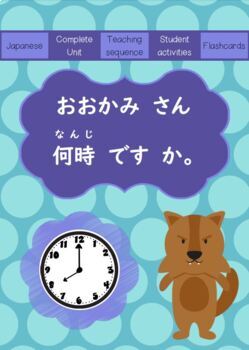
Japanese: 'What's the time, Mr. Wolf?'
This unit of work is designed to teach students of Japanese, how to tell the time using o'clock times. Now an additional supplement extends the unit to 'half-past' times too.It is anticipated that students already know how to count to twelve in Japanese and can recognise kanji numbers to twelve.The kit hopefully includes everything a teacher needs!! It includes:Story, Original Song to familiar tune,Flashcards, various game cards, Clock model, Pop-up wolf card, Detailed explanations of ideas and
Subjects:
Grades:
Not Grade Specific
Types:
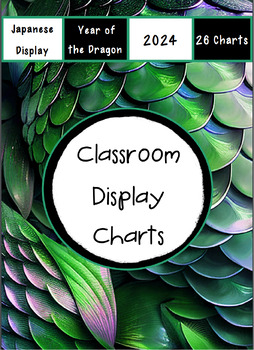
JAPANESE: Year of the Dragon, 2024 - Classroom Display
Create interest and discussion at the start of the 2024 year with these display charts and additional display elements!This resource is designed for Japanese classrooms. Teachers may select and print all charts and additional elements or just a selection, depending on the space available. The additional display materials include clipart images and labels. The charts could also be displayed with a data projector. The Thinking Routine 'See, Think, Wonder' could then be utilised to generate meaning
Subjects:
Grades:
Not Grade Specific
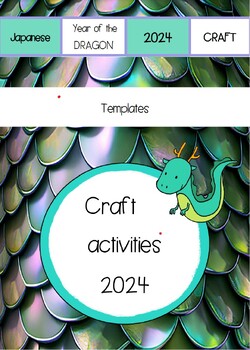
JAPANESE: Year of the Dragon Craft Templates
Commence the school year with activities from this resource! 2024 is The Year of the Dragon so the templates provided are based on this theme.NOTE: This resource is for students of Japanese and is aimed at the Primary level. However, some activities are also suitable for Junior Secondary students.Starting a new school year with the materials included in this resource allows students new to the program to participate in their first Japanese lessons in non-threatening ways. The craft created can b
Subjects:
Grades:
Not Grade Specific
Types:
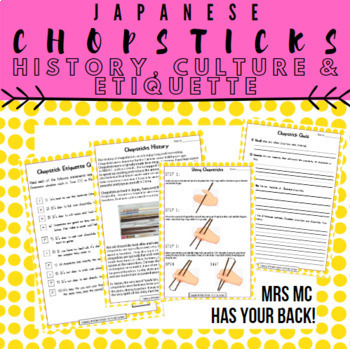
Japanese Food: Chopstick History, Use, Culture, Etiquette Do's and Don'ts Quiz
Teach students how to use Japanese chopsticks (hashi) using the correct social etiquette and techniques. This resource has several reading passages, instructions for how to use chopsticks, fun chopstick training games for the classroom, etiquette do's and don'ts, a short answer and long answer quiz (using AUS QCAA cognitive verbs), a quick true/false quick and modelled responses. Included:Chopstick history: Origins of chopstick invention in China and influence of Chinese cultureChopstick types i
Subjects:
Grades:
7th - 12th, Higher Education, Adult Education
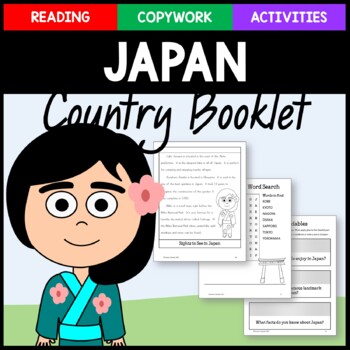
Japan Copywork, Activities, and Country Booklet
Take a pretend trip to Japan to learn fun facts and information about Japanese life.Using this country study, students can:Cut out a passport stamp and paste it into an included passport to start the journeyCreate a tab-style booklet featuring different information about Japan and Japanese cultureAnswer questions about the facts and information they have studiedComplete various activities, such as a crossword puzzle, a word search, and moreWrite informational texts as copywork or compose their o
Grades:
2nd - 8th
Types:
Also included in: Around the World Mega Bundle - 92 countries - 50% Discount
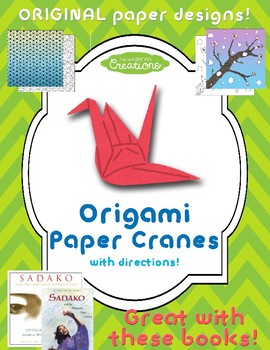
Origami Paper Cranes!
Origami Paper Cranes!
Are your students studying World War II in the Pacific and want a fun activity? Are you reading a book about Sasaki Sadako and the 1,000 paper cranes? Do you want a fun, quick activity for indoor recess? Are you a Japanese teacher looking for your students to help decorate your room?
This is for you!
Included are 5 original origami papers (black and white and color!) and paper crane directions. You can reuse the origami paper for any other origami, too! Don't limit yours
Grades:
Not Grade Specific
Types:
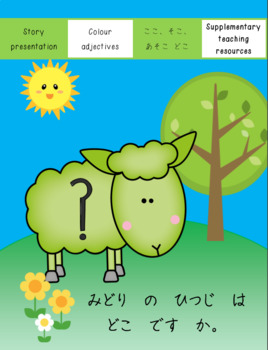
Japanese:Where is the green sheep? Story V.1 + Supplementary Teaching Resources
This unit has been designed to promote enjoyable choral reading.Students will mimic the teacher reading the pages of the ‘story’ and gradually develop the knowledge and skill to read it, and other variations, independently.In the process, students will be introduced to the relative location words of ここ、 そこ、あそこ and どこ.The colours included are:みどり、あお、あか、しろ、むらさき、きいろ、 ピンク、オレンジ、ちゃいろ、 くろThe materials included in this resource are:*‘Story book’ pages ( ideal for display using data projector, but coul
Subjects:
Grades:
1st - 5th
Showing 1-24 of 2,876 results

